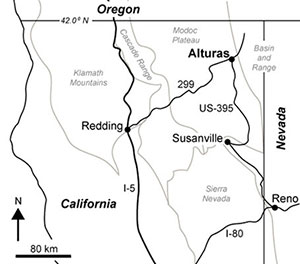Article Search
International Team of Scientists Launches Fossil Database:
Open-source Resource Will Help Determine Evolution's Timescale

GREENWICH, CT, February 24, 2015 – Have you ever wondered exactly when a certain group of plants
or animals first evolved? This week a groundbreaking new resource for scientists will go live, and
it is designed to help answer just those kinds of questions. The Fossil Calibration Database (http:/
/fossilcalibrations.org), a free, open-access resource that stores carefully vetted fossil data, is the
result of years of work from a worldwide team led by Dr. Daniel Ksepka, Curator of Science at the
Bruce Museum in Greenwich, and Dr. James Parham, Curator at the John D. Cooper Archaeological
and Paleontological Center in Orange County, California, funded through the National Evolutionary
Synthesis Center (NESCent).

Sea urchins (echinoids) are the spiny, globular, ocean-floor dwelling invertebrates that are closely related to sand dollars. Urchins can live in a variety of ocean environments, including shallow seas as well as in deep-sea bottoms. The Cenozoic fossil record of sea urchins in this deep-water zone of the Mediterranean are scarcely known, making the evolution of the Miocene to Recent Mediterranean deep-water echinoids poorly understood.
Recently PE authors Enrico Borghi, Vittorio Garilli, and Sergio Bonomo studied sea urchins from the Mediterranean deposits that formed in the deep-sea environments that dated back to ~1-3 million years ago during the late Cenozoic. Localities in Italy gave the authors a rare opportunity to study well-preserved sea urchin specimens, which provided further evidence of the nature of the deep-Mediterranean fauna that was established after the late Miocene salinity crisis.

Trace fossils record the behaviors of organisms long gone. These biogenic structures, meaning features created by living organisms such as trackways or burrows, are preserved within sedimentary rocks. The study of these trace fossils is called “ichnology” and the evidence from the traces clue scientists into the behavior and anatomy of the trace-making creatures. Understanding the behavior of these organisms can be handy when body fossils are scarce or nonexistent. Frequently scientists draw parallels between modern traces and those preserved in rock. Recently PE authors Angeline Catena and Daniel Hembree investigated the biogenic structures produced by a species of sand-swimming skink, Chalcide ocellatus, and recorded the diversity of biogenic structures produced by these desert-dwelling lizards in the sand.

Anti-evolution claims regarding dinosaurs and pterosaurs are a constant pain for paleontologists. A simple google search will reveal multiple young-Earth creationists websites that claim to have proof of these flying Mesozoic reptiles living alongside humans in the form of illustrations and paintings. A recent paper in PE by Phil Senter and Darius Klein investigated the claims that pterosaurs survived into the sixteenth and seventeenth centuries based on illustrations of specimens by European naturalists.
The last of a lineage of giants: the discovery story of Anancus arvernensis mencalensis
The geographic and geologic context
As is so often the case, it was chance, or the conjunction of chances, that was the deciding factor in advancing our understanding of the life that inhabited our planet thousands and millions of years ago. It was during the month of July, 2006, when, under a blazing sun, the paleontologists who were conducting a survey for the Fonelas Project discovered new fossil localities in the desert of Guadix in southeastern Spain.
 Guadix Desert (southeastern Spain)
Guadix Desert (southeastern Spain)
 Geochronology of the upper Alturas Formation, northern California: Implications for the Hemphillian-Blancan North American Land Mammal Age boundary
Geochronology of the upper Alturas Formation, northern California: Implications for the Hemphillian-Blancan North American Land Mammal Age boundary
Steven R. May, Andrei M. Sarna-Wojcicki, Everett H. Lindsay, Michael O. Woodburne, Neil D. Opdyke, Elmira Wan, David B. Wahl, and Holly Olson
Charles Repenning was one of the foremost world experts on Arvicoline evolution and biostratigraphy. Based on early radiometric dates and magnetic polarity stratigraphy, Rep interpreted the first stratigraphic occurrence of Mimomys in the section at Alturas, California as the oldest occurrence in North America and therefore considered it very important for constraining the age of the Hemphillian - Blancan land mammal age boundary.

